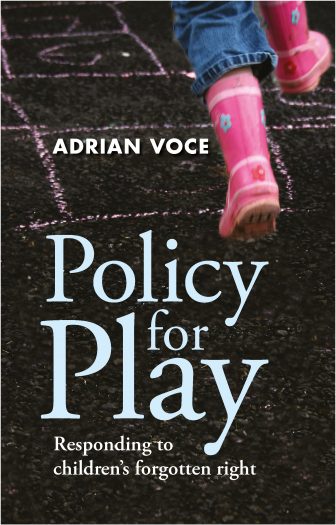
The UN is clear that towns and cities need leadership from national government on play
The role of local governments – and their many departments, functions and responsibilities – in creating and promoting child-friendly towns and cities, is the main focus of the Child in the City movement. Making space and provision for children to play, and for young people to socialise, is a vital component of that endeavour.
But what about the role of national government? The aspiration of children’s rights advocates for more child friendly towns and cities, cannot be achieved by local government alone. Many of the policies, laws and regulations that impact on children’s rights are set by national government. Conversely, national government policy is doomed to failure without the willing collaboration of the local government agencies, which must deliver programmes and make changes on the ground.
In the case of children’s play policy, the need for government bodies to cooperate is further complicated by the ubiquity of play itself and the necessarily crosscutting nature of efforts to provide for it in the public realm. Housing; spatial planning; traffic; highways; police; parks and leisure; and cultural services – not to mention schools and childcare services – each have an impact on children’s opportunities to play. In each of these areas, national government policy will almost always be one of the main drivers for local decisions.
This is why, when it comes to children’s play, the UN Committee on the Rights of the Child (CRC) has expanded on article 31 of the 1989 convention to spell out, in a General Comment (UNCRC, 2013) that national governments have an obligation to develop and implement plans, budgets and legislation for the crosscutting policy framework necessary to ‘recognise, protect and fulfil’ children’s right to play.
Five years before the CRC’s general comment on the right to play, the UK government introduced a 12-year Play Strategy for England designed to achieve precisely the long-term, crosscutting changes that play advocates have long been calling for, but this was abandoned by the Coalition Government that came to power in 2010 in the wake of the great financial crash.
Now, in its response to the UK government’s report of its record on children’s rights, the CRC (2016) has criticised the abandonment of the Play Strategy for England and expressed its concern at both the lack of policy and the decline in funding for play. On children’s rights in general, the UN deplores the abandonment of a long-term strategy, introduced by the Labour government (2009) to take forward policies and measures to progress the full implementation of the 1989 convention in England.
My presentation at Ghent 2016 will explore the need for coordinated, multi-level strategic planning for play, led by national government policy. We will look at the obligation of nation states under Article 31 the UNCRC, as explicated by the General Comment of 2013, and consider what the play strategy for England can teach us about national and local government roles in ‘recognising, fulfilling and protecting’ children’s right to play, as required under the convention.
Based on my book, Policy for Play: responding to children’s forgotten right (Policy Press, 2015) I will explore the basis for coordinated local and national action on children’s play, and the challenge for advocates in persuading governments to take their obligations seriously.

Author: Adrian Voce, Policy for Play: responding to children’s forgotten right.
Photo Credit: photo by Policy for Play
Interested in hearing more on Adrian’s research? Join us at the Child in the City Conference in Ghent, Belgium on the 7-9th November!




